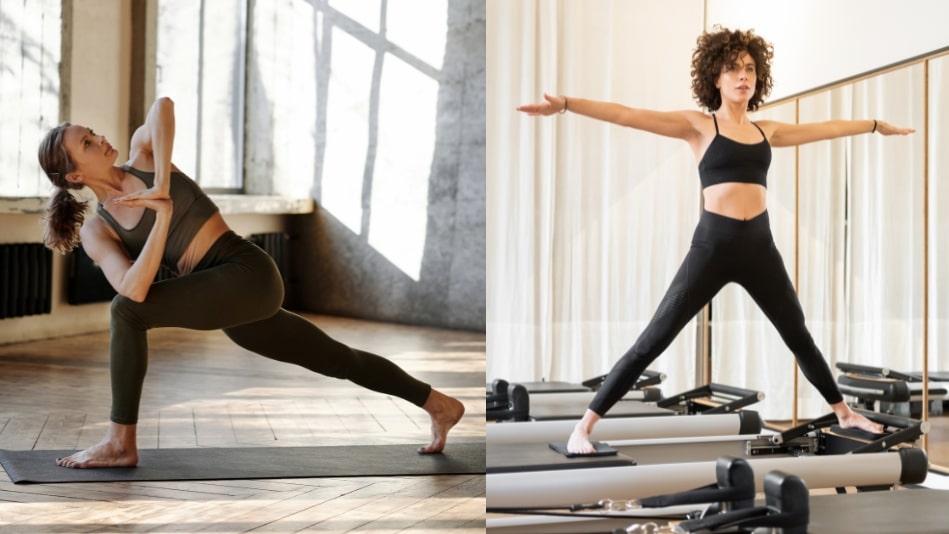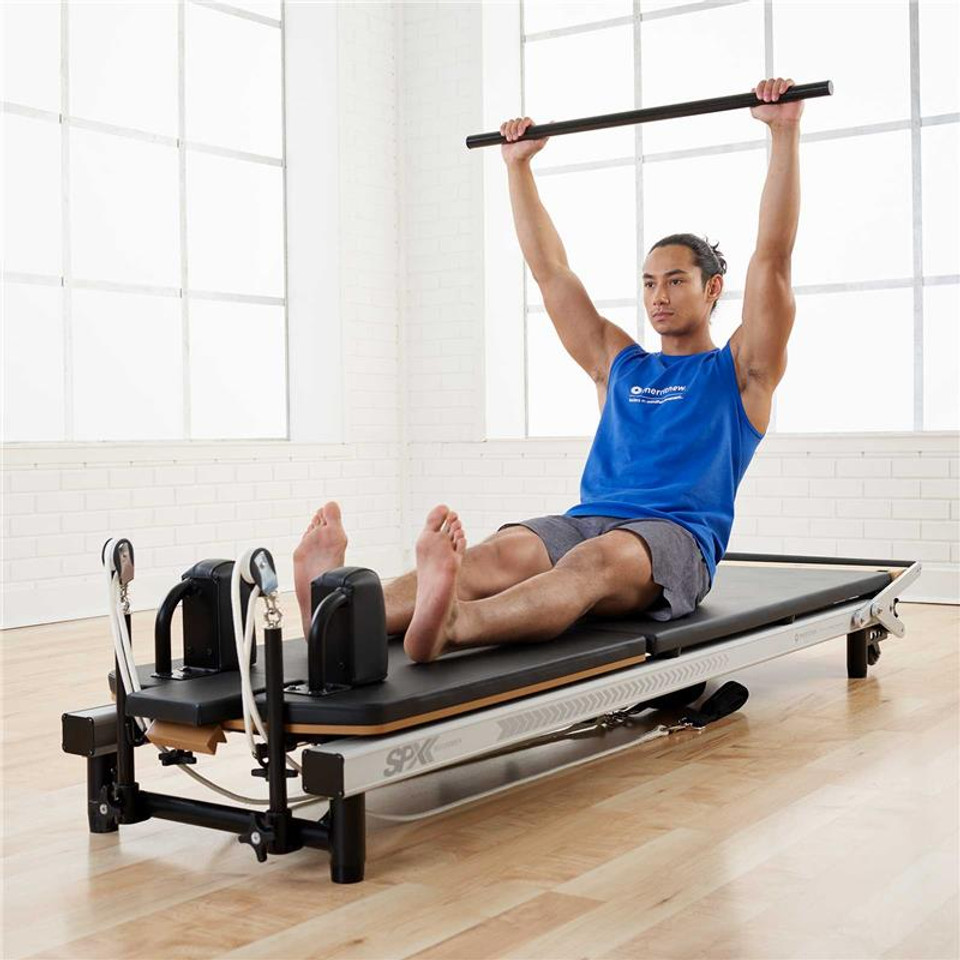Pilates Vs. Yoga: Best Workout for Your Goals
When it comes to mindful movement, Pilates and yoga are two popular workout choices. However, people find it tricky to differentiate between both, and we can understand why.
For simple differentiation, Pilates workouts for core strength are heavily inspired by Yoga. Imagine it as Yoga on steroids geared toward core strength. Yoga, on the other hand, focuses mainly on flexibility and calm.
Both disciplines gravitate towards control and mindfulness, but their unique approaches lead to different results and experiences. One is known for stability and strength with precise movements, while the other is praised for improving mental clarity and flexibility.
Either way, whether you’re looking to feel zen or aiming to tone up and get strong, both are incredible. But to know which one’s right for you, let’s break down the key differences so you can decide without even needing a trial class (unless you want one).
Differences Between Pilates and Yoga
Pilates, previously known as “Contrology,” was Developed in the 1920s by Joseph Pilates. It focuses on controlled, repetitive movements that strengthen the core and improve posture. It was designed as a rehabilitative method to help patients regain movement control and balance.
Pilates isn’t just about lying on a mat looking graceful—okay, maybe a little—but the essence is in the precision. Since it was developed to help injured soldiers, athletes, and dancers recover, this workout focuses on core strength, alignment, and muscle control.
However, Pilates isn’t cardio-heavy. It’s more about small, deliberate movements that target deep muscles, especially in your back and abs. That’s why it’s become the go-to for rehab and posture improvement—perfect for modern-day professionals glued to their desks or those recovering from injuries.
Yoga, on the other hand, goes way back—like 5,000 years. It’s a wellness practice that blends body, mind, and spirit with techniques that range from physical poses (asanas) to breathing exercises (pranayama). Each style, whether Hatha, Vinyasa, or Ashtanga, offers a unique pace and philosophy.
The great thing about yoga is how it weaves mindfulness into movement. So you are not just stretching but doing a moving meditation that helps alleviate stress, improves sleep, and restores balance in ways even a latte can’t.
But don’t be fooled: pushing too hard into poses can lead to injuries like sprains or spinal fractures, especially in advanced postures like headstands.
Key differences between these workouts lie in their movements and breathing techniques:
Focus and Movements
Pilates centers on core strength and uses precise, repetitive movements. You can also utilize specialized equipment like the Reformer, which is designed to stabilize and support movement.
Yoga, however, is more holistic. It engages the entire body in poses that enhance physical and mental flexibility. Yoga also incorporates meditative elements like relaxation, visualization, single-point focus, etc., making it ideal for mental clarity. Poses like downward dog or warrior focus on alignment and flexibility, connecting breath with movement.
Breathing Techniques
Pilates use lateral or ribcage breathing, which helps engage the core while providing stability and strength to movements. This technique also aids in control and endurance, especially for injury recovery.
In Yoga, practitioners focus on diaphragmatic breathing, or "ujjayi" breath, which creates a calming effect and promotes relaxation. Studies have shown that this type of breathing activates the parasympathetic nervous system, reducing stress levels and lowering blood pressure (NIH).
Shared Benefits of Pilates and Yoga

Pilates and yoga promote mindfulness and body awareness, teaching you to “listen” to your body and control your movements. This shared benefit has been shown to increase physical resilience and mental calm, as it makes you conscious and decreases stress levels.
Pilates or yoga both enhance body alignment and improve mobility and stability. One (Pilates) helps develop core muscles and postural alignment, while the other (yoga) increases flexibility and balance through flowing full-body movements.
Yoga helps improve muscle balance and joint health, and Pilates complements this by reinforcing muscle engagement and alignment.
Both practices are also known for rehabilitation exercises for recovery: Pilates with its controlled, machine-supported movements and yoga with poses that focus on stretching and gentle muscle engagement. Pilates is especially effective for core-centric recovery, and yoga is commonly recommended for injury prevention and gentle healing due to its flexibility focus.
Choose the Right Practice for Your Needs
If you are looking for something to tone and stabilize your core or recover from injury, Pilates offers an excellent approach with structured and machine-assisted workouts. Pilates’ targeted control over movements builds endurance and stability without strain, making it a great choice if you enjoy disciplined training or need support for specific injuries.
On the other hand, yoga could be the ideal choice if your goal is to reduce stress, increase overall body flexibility, or explore a more spiritual side of fitness. Yoga practitioners (Yogis) often state that it helps them connect with their bodies and achieve a sense of emotional balance.
Many people find that combining both practices brings out the best of each. Pilates and yoga complement each other beautifully, as Dr. Kristy Manuel, a physical therapist, explains: “Yoga builds flexibility, while Pilates reinforces strength and control. Together, they create a balanced and well-rounded fitness approach” (Yoga Journal).
Fun fact? Pilates isn’t traditionally associated with spirituality—though it might make you feel like you’ve achieved nirvana when you finally master the Reformer.
In conclusion, if you got an injury? Pilates wins hands-down for rehabilitation. Need to de-stress and balance your energy? Roll out that yoga mat.
Many fitness enthusiasts also mix the two, doing Pilates for strength and posture while keeping yoga in their back pocket for mindfulness and flexibility. Think of it as cross-training for both the body and soul—a little namaste with a side of Reformer never hurt anyone.
Whether you’re a die-hard yogi or more inclined towards Pilates, both practices have their perks. So why not flirt with both and see which one steals your heart—or core?

